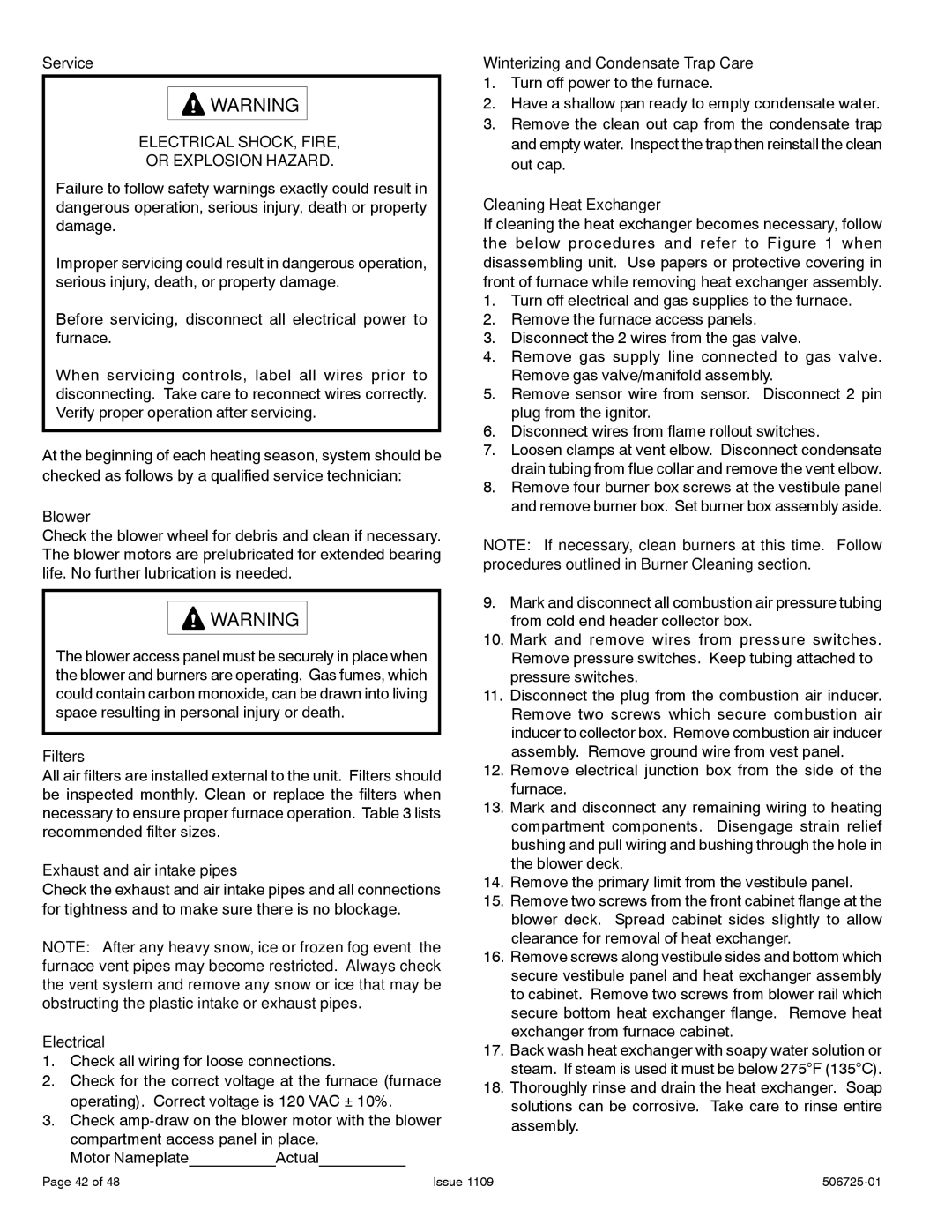A95DF, 95G1DF, A93DF, 92G1DF specifications
Allied Air Enterprises offers a range of high-efficiency commercial and residential heating and cooling systems, with models like the 92G1DF, A93DF, 95G1DF, and A95DF gaining popularity for their cutting-edge technology and advanced features. Each of these models stands out in performance, reliability, and energy efficiency, making them excellent choices for diverse applications.The 92G1DF model features a multi-stage gas valve that enhances temperature regulation, allowing for more precise heating. With an impressive Annual Fuel Utilization Efficiency (AFUE) rating, this furnace efficiently utilizes fuel, resulting in lower energy costs and reduced emissions. Its compact design makes it suitable for installations in tight spaces, while the durable heat exchanger extends the unit’s lifespan.
In contrast, the A93DF is engineered for enhanced comfort and flexibility. This model incorporates a variable-speed blower motor, which adjusts air circulation according to the heating demands in the space. This feature not only maximizes comfort by providing consistent temperatures but also promotes energy savings by reducing unnecessary power consumption. Additionally, the A93DF includes advanced diagnostic capabilities that simplify troubleshooting and maintenance, making it a favorite among HVAC professionals.
The 95G1DF is another noteworthy model that combines versatile performance with exceptional efficiency. This furnace boasts an AFUE rating of up to 95%, making it one of the most efficient models in its class. Its innovative design includes a secondary heat exchanger that captures additional heat from exhaust gases, optimizing energy utilization. Furthermore, the 95G1DF is equipped with an advanced control system that allows homeowners to set specific comfort levels.
Lastly, the A95DF model takes efficiency to a new level. With features such as a modulating gas valve and a variable-speed blower, this unit seamlessly adapts to changing heating needs. The A95DF not only heats a space but also enhances air quality through advanced filtration options. Its whisper-quiet operation adds to user satisfaction, making it ideal for residential settings.
In summary, Allied Air Enterprises' models 92G1DF, A93DF, 95G1DF, and A95DF demonstrate a commitment to innovation and energy efficiency, with features designed to provide superior comfort and reliability. With their advanced technologies and high-performance characteristics, these models are positioned as top contenders in the heating and cooling marketplace, ensuring that customers can enjoy a comfortable environment year-round.

